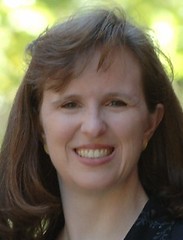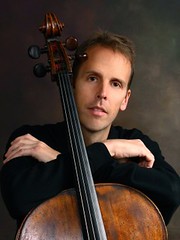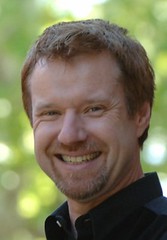Founded in 2008, Trio Solis combines three dynamic virtuosi:
Corinne Stillwell (violin),
Gregory Sauer (cello), and
Read Gainsford (piano)
Since their Music @ Main concert in January 2009, subsequent performances by the faculty artists from Florida State University's College of Music included an engagement at New York's Carnegie Hall in May 2009, where they played the Trio by Pulitzer Prize-winning composer Ellen Taaffe Zwilich with the composer in attendance.
Joining Trio Solis is Deborah Bish, Associate Professor of Clarinet at Florida State University.
PROGRAM SELECTION
BIOGRAPHY RESOURCE CENTER articles on ...
Olivier Messiaen
Use your Jacksonville Public Library Card number to access the articles from our subscription databases.
Or Get a free eCard here!
The eCard allows anyone access to our online services!
Or Get a free eCard here!
The eCard allows anyone access to our online services!
Olivier Messiaen
Quatuor pour la fin du temps
1. Liturgie de cristal ("Liturgy of crystal")
2. Vocalise, pour l'Ange qui annonce la fin du Temps ("Vocalise, for the Angel who announces the end of time")
3. Abîme des oiseaux ("Abyss of birds", for solo clarinet)
4. Intermède ("Interlude", for violin, cello, and clarinet)
5. Louange à l'Éternité de Jésus ("Praise to the eternity of Jesus", for cello and piano)
6. Danse de la fureur, pour les sept trompettes ("Dance of fury, for the seven trumpets")
7. Fouillis d'arcs-en-ciel, pour l'Ange qui annonce la fin du Temps ("Tangle of rainbows, for the Angel who announces the end of time")
8. Louange à l'Immortalité de Jésus "Praise to the immortality of Jesus", for violin and piano)
Olivier Messiaen in the Library's Catalog
Corinne Stillwell (violin) earned her degrees from The Juilliard School, where she first enrolled at age ten. A versatile musician, she has appeared in recital at Carnegie's Weill Recital Hall, on the Dame Myra Hess series in Chicago, and as soloist with numerous orchestras across the United States and on tour in Eastern Europe. Her chamber music activities have included performances at Alice Tully Hall, the Chamber Music Society of Lincoln Center, the Kosciuszko Foundation, the Museum of Modern Art, and at the festivals of Aspen, Norfolk, Skaneateles, the Victoria Bach Festival, and the International Festival-Institute at Round Top in Texas. Frequently heard on WXXI-FM public radio, she has collaborated with David Shifrin, Robert Levin, Pepe Romero, members of the Pro Arte and Cavani quartets, and members of the faculty at the Eastman School of Music. She has served as Assistant Concertmaster of the Rochester Philharmonic and prior to that, was a member of the Harrington String Quartet in Amarillo, Texas. In 2007, Ms. Stillwell joined the faculty at Florida State's College of Music, where she is Assistant Professor of Violin.
Praised for his versatility, Gregory Sauer (cello) has appeared in numerous solo recitals, including performances at the Old First Concert Series in San Francisco, the Crocker Art Museum in Sacramento and the Brightmusic Concert Series in Oklahoma City, and numerous chamber music performances have included appearances at Tanglewood, Aspen Music Festival, Santa Fe Promusica, and the Boulder Modern Music Festival, among many others. Greg has performed concertos with the Houston Symphony, Hudson Valley Philharmonic, the Tallahassee Symphony Orchestra, the Quad City Symphony, and Oklahoma City Philharmonic, to name only a few. A Prizewinner in the Hudson Valley Philharmonic and Ima Hogg national competitions, he served nine seasons as principal cellist of the Oklahoma City Philharmonic Orchestra. Mr. Sauer is Assistant Principal Cello of the Colorado Music Festival Orchestra, and, prior to joining the Florida State University music faculty in 2006, he taught at the University of Oklahoma for 11 years, where he was named Presidential Professor in 2005.
Read Gainsford (piano) has performed widely in the USA, Europe, Australia, South Africa, and his native New Zealand as solo recitalist, concerto soloist and chamber musician. He has made successful solo debuts at the Wigmore Hall and Carnegie Hall's Weill Recital Hall, and has performed in many other prestigious venues, including the Kennedy Center, Queen Elizabeth Hall, Barbican Centre, Fairfield Halls, Birmingham Town Hall and St.-Martin-in-the-Fields. Dr. Gainsford has recorded for the Amoris label, BBC Radio Three, Radio New Zealand's Concert Programme, and has broadcast on national television in New Zealand, the UK, and Yugoslavia. Since moving to the United States in 1992, Read has been a guest artist for the American Music Teachers Association, has appeared at the Gilmore Keyboard Festival and the Music Festival of the Hamptons, and has spent several summers at the Heifetz International Music Institute. He is a member of the contemporary music group Ensemble X, and also the Garth Newel Chamber Players. Formerly on the faculty of Ithaca College where he received the college-wide Excellence in Teaching Award in 2004, Dr. Gainsford became Associate Professor of Piano at FSU in 2005.
 Deborah Bish is Associate Professor of Clarinet at Florida State University. Before moving to Tallahassee in 2001, she served as the professor of clarinet at Henderson State University. She has performed with orchestras throughout the United States, including the Arizona Opera (most notably in a production of Wagner's Ring Cycle), the Mainly Mozart Festival Orchestra, the Phoenix Symphony, the North Carolina Symphony, and the Arkansas Symphony, and she now performs with the Tallahassee Symphony Orchestra. She has been featured as a recitalist, clinician, and chamber musician at several prestigious festivals and conventions, including a 2004 performance at Weill Recital Hall in Carnegie Hall. Bish is very active in the commission, research, and performance of new works, including an upcoming recording of the works of Gregory Wanamaker and a biography of clarinetist and composer William O. Smith. Prof. Bish holds degrees from Arizona State University and Florida State University.
Deborah Bish is Associate Professor of Clarinet at Florida State University. Before moving to Tallahassee in 2001, she served as the professor of clarinet at Henderson State University. She has performed with orchestras throughout the United States, including the Arizona Opera (most notably in a production of Wagner's Ring Cycle), the Mainly Mozart Festival Orchestra, the Phoenix Symphony, the North Carolina Symphony, and the Arkansas Symphony, and she now performs with the Tallahassee Symphony Orchestra. She has been featured as a recitalist, clinician, and chamber musician at several prestigious festivals and conventions, including a 2004 performance at Weill Recital Hall in Carnegie Hall. Bish is very active in the commission, research, and performance of new works, including an upcoming recording of the works of Gregory Wanamaker and a biography of clarinetist and composer William O. Smith. Prof. Bish holds degrees from Arizona State University and Florida State University.Program Notes by Ed Lein, Music Librarian
 Among the most significant composers of the 20th Century, France’s Olivier Messiaen (1908-1992) was also a noted organist, music theorist, and extremely influential teacher. He entered the Paris Conservatory in 1919 (at age 11), was organist at Église de la Sainte-Trinité in Paris from 1931 to 1978, and joined the faculty of the Paris Conservatory in 1941. Just prior to this latter appointment, Messiaen, who had been serving in the French army's medical auxiliary, was imprisoned in a concentration camp when the Germans occupied France in 1940, and it was while he was a prisoner that he composed and first performed his best-known work, Quatuor pour la fin du temps ("Quartet for the End of Time"). The instrumentation was determined by the players who were available (also prisoners), and Messiaen, a devout Roman Catholic, states in the score that the work is directly inspired by passages from the Biblical Book of Revelation:
Among the most significant composers of the 20th Century, France’s Olivier Messiaen (1908-1992) was also a noted organist, music theorist, and extremely influential teacher. He entered the Paris Conservatory in 1919 (at age 11), was organist at Église de la Sainte-Trinité in Paris from 1931 to 1978, and joined the faculty of the Paris Conservatory in 1941. Just prior to this latter appointment, Messiaen, who had been serving in the French army's medical auxiliary, was imprisoned in a concentration camp when the Germans occupied France in 1940, and it was while he was a prisoner that he composed and first performed his best-known work, Quatuor pour la fin du temps ("Quartet for the End of Time"). The instrumentation was determined by the players who were available (also prisoners), and Messiaen, a devout Roman Catholic, states in the score that the work is directly inspired by passages from the Biblical Book of Revelation:And I saw another mighty angel come down from heaven, clothed with a cloud: and a rainbow was upon his head, and his face was as it were the sun, and his feet as pillars of fire, and he set his right foot upon the sea, and his left foot on the earth. And the angel which I saw stand upon the sea and upon the earth lifted up his hand to heaven, and swore by him that liveth for ever and ever that there should be time no longer: But in the days of the voice of the seventh angel, when he shall begin to sound, the mystery of God should be finished.Of its eight movements, the 1st, 2nd, 6th and 7th use the full quartet, while the others use one to three instruments from the ensemble. The 3rd is a demanding slow movement for clarinet solo, and the 4th is a scherzo-like movement that omits the piano. The 5th, for cello and piano, and the 8th, for violin and piano, were both adapted by Messiaen from earlier pieces.
Like most of Messian's works, the Quartet is rhythmically complex, and the melodies and harmonies make use of non-traditional scales which deliberately avoid definite tonal centers. Messiaen considered himself as much an ornithologist as a musician, and birdsong often plays a key role in his music, as in the first movement which includes imitations of blackbirds (in the clarinet) and nightingales (in the violin). The unison instruments in the 6th movement are meant to imitate gongs and trumpets, and the movement illustrates the composer's fascination with augmented and diminishing rhythmic patterns. The 2nd and 7th movements share thematic materials, and the rainbows that Messiaen describes as accompanying the angel were more than mere fancy for the composer--he had a benign neurological condition called synaesthesia which caused him to experience colors when he heard music.
Listen at Youtube.com to the 1st movement; 2nd movement; 6th movement; 7th movement





No comments:
Post a Comment